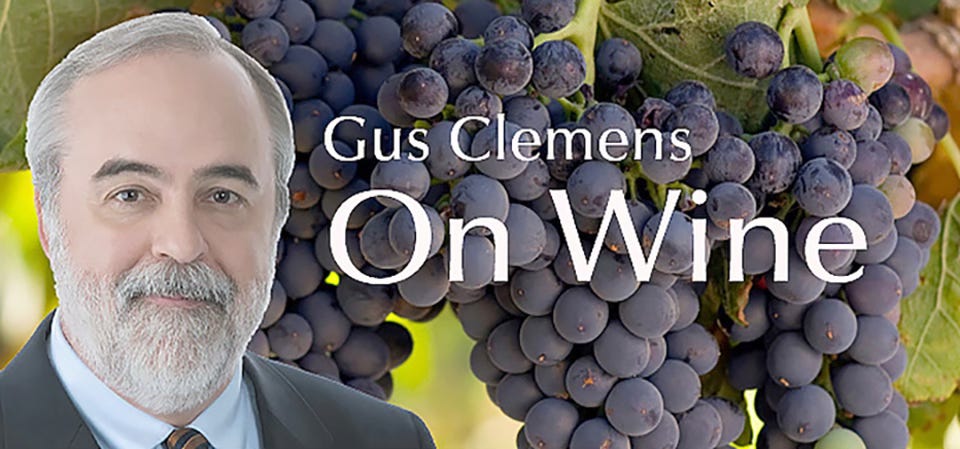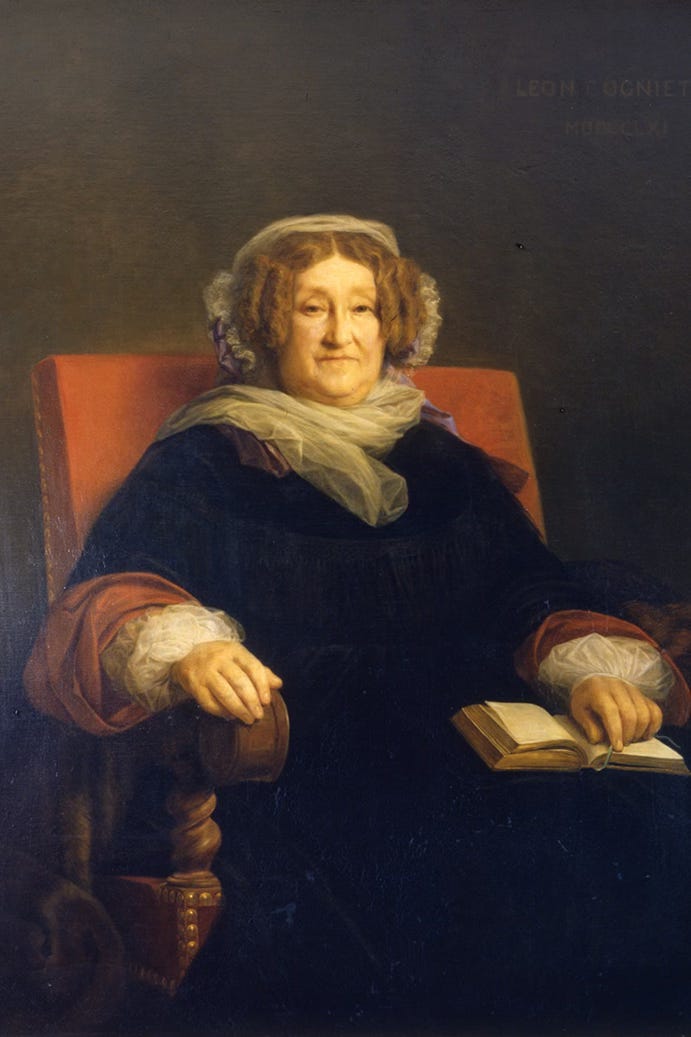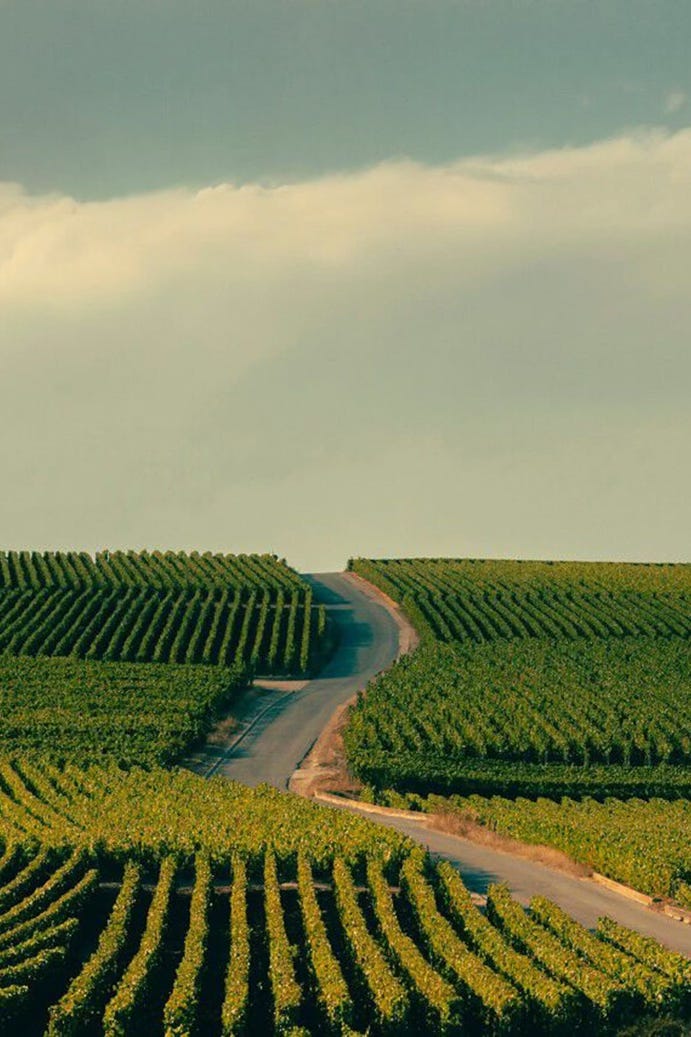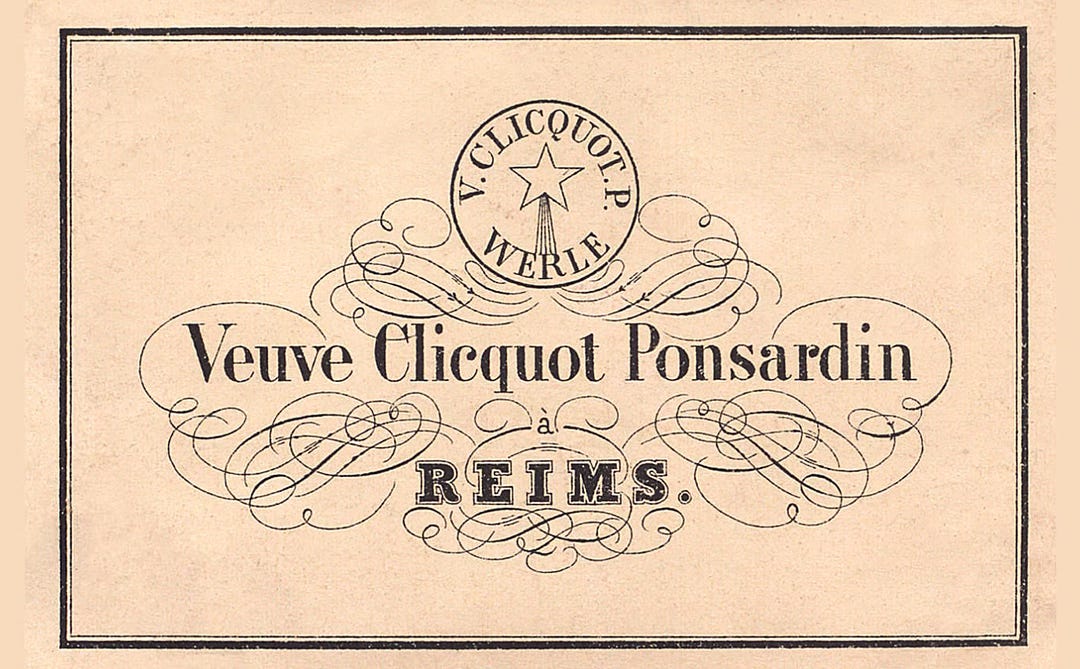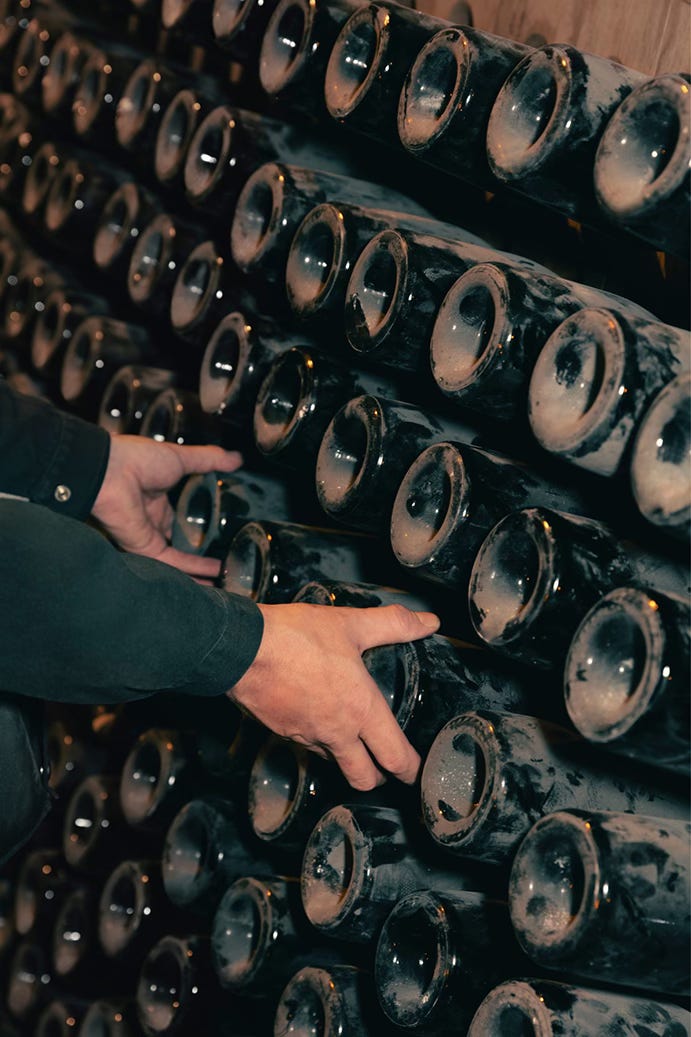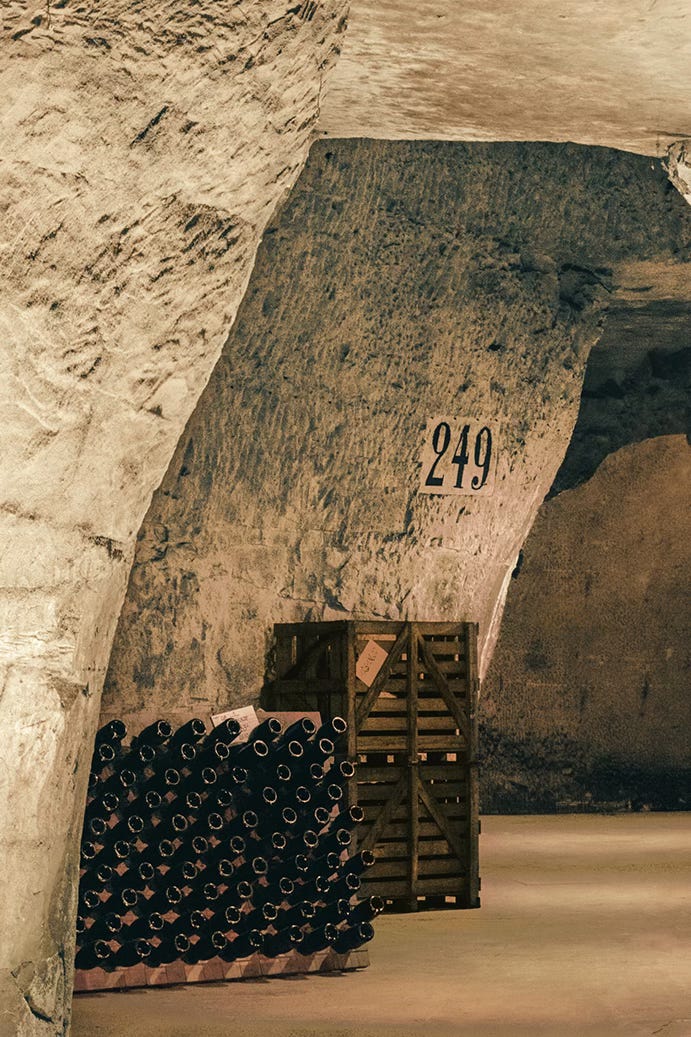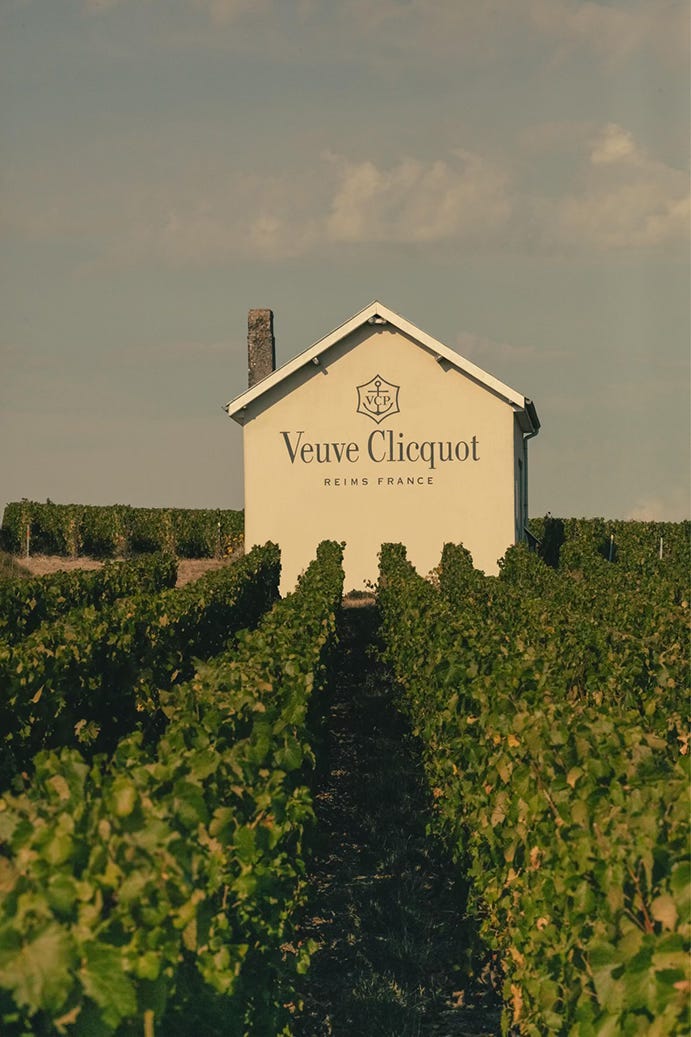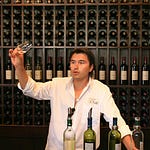This is the weekly column
Revolution and evolution in wine in the 17th and 18th centuries set up the sparkling wine world we enjoy today. Christopher Merret’s experiments in secondary fermentation. Dom Pérignon’s vineyard and winemaking improvements. English breakthroughs in glass making.
But that is not the whole story by a long shot. It took a young widow with no business experience, but with more than a healthy dose of grit, determination, innovation, intelligence, and audacity to revolutionize Champagne production, create the product we know today, and establish one of the world’s preeminent luxury brands.
Madame Clicquot
Barbe-Nicole Ponsardin was born in 1777 and grew up during one of the most turbulent times in French and world history. Her father adroitly navigated the treacherous tides of the French Revolution. The family retained influence, even hosting Napoleon and Josephine at L’Hôtel Ponsardin.
In 1798, Barbe-Nicole married François Cliquot, the son of Philippe Clicquot, owner of a successful textile business and vineyards in the Champagne region of France. The marriage consolidated the interests of two wealthy families.
Veuve Clicquot vineyard
Tragedy struck in 1805 when François died at age 30, leaving 27-year-old Barbe-Nicole Ponsardin Cliquot a widow with a young daughter, Clémentine. Devastated by his son’s death, Philippe Clicquot moved to liquidate the family wine business. No, announced Barbe-Nicole. She wanted to risk her inheritance to continue making wine in Champagne.
Under the new Napoleonic Code that was proclaimed just the year before, a widow possessed legal rights that married women did not: they could own and operate a business. Recognizing her intelligence and determination and the new law’s prerogatives for widows, Philippe acceded to demands of his son’s widow.
Madame Clicquot was an innovator from the beginning. In 1810, she created what is considered the world’s first vintage Champagne.
Veuve Clicquot Comet Vintage label
In 1811, she created the 1811 “Comet Vintage,” so named for the Great Comet of 1811. She added a star to her corks and labels to identify the wine.
In 1814, amid the chaos of the crumbling Napoleonic Empire, she audaciously shipped 10,550 bottles of the Comet Vintage to Russia, risking bankruptcy and possible imprisonment. The Champagne was such a success, she followed up with a second ship carrying 12,500 bottles.
Veuve Clicquot riddling
Around 1816, Madame Clicquot revolutionized Champagne. Sparkling wine faced a problem. It didn’t sparkle. The critical second fermentation left the bottle filled with cloudy sediment from dead yeast cells. According to legend, she had her staff drill holes obliquely into her kitchen table to hold bottles at an angle. This allowed the bottles to be turned to encourage the sediment to gather at the neck of the bottle where the plug of yeast detritus eventually could be removed. The process is known as “riddling.” It revolutionized Champagne making and is still used by Champagne and sparkling wine makers using the méthode champenoise (traditional method) today.
In 1818 Madame Clicquot created the first blended rosé Champagne by blending white wine with still red wine—again, the process still used today.
Madame Clicquot benefitted from the very high quality of her vineyards. They are the foundation of the Veuve Clicquot operation today. In 2025, Veuve Clicquot owns almost 1,000 acres, one of the largest estates in Champagne. An exceptional 95% of those vineyards are Grands Crus or Premiers Crus; only 25% of the entire Champagne region are so classified. Veuve Clicquot has 12 of the 17 Grands Crus communes and 20 of the 44 Premiers Crus communes. The winery also enjoys the benefit of quintessential chalk caves that provide ideal conditions for aging.
Veuve Clicquot chalk caves
Madam Clicquot never remarried, remaining a widow (“veuve” in French). Had she remarried, her business and her achievements would legally transfer to her husband. At the time of her death, at age 89 in 1866, sales of her wine exceeded 750,000 bottles a year, was an international brand, and one of the world’s most prestigious Champagne houses. She certainly had earned her description as the “grande dame of Champagne.”
Veuve Clicquot summed up her philosophy of life in a letter to her granddaughter: “The world is in perpetual motion, and we must invent the things of tomorrow. One must go before others, be determined and exacting, and let your intelligence direct your life. Act with audacity.”
And so she did. Today Veuve Clicquot is part of the LVMH luxury goods conglomerate. Her image appears on the wire cage—another of her innovations, by the way—covering each bottle. So, too, her moto for her Champagne: “Only one quality, the finest.” Never underestimate what one person can do, especially if they are an audacious female.
Veuve Clicquot vineyard
There is a recent movie of Barbe-Nicole Ponsardin Cliquot’s life “Widow Clicquot” available through several streaming resources, including Netflix. As with all historical dramatic productions, it must toy with possible truths to create dramatic tension and narrative drive, but it admirably restrains from excess. Worth a watch.
Tasting notes
• Veuve Clicquot Ponsardin Yellow Label Brut Champagne NV: house’s signature wine; consistently delivering freshness, strength, creamy mouthfeel, a symphony of fruit from some of the top vineyards in Champagne. One of the most affordable premium, elite Champagne pours. $45-74 Link to my review
Last round
Haunted French pancakes give me the crepes. Wine time.
Links worth exploring
Diary of a Serial Hostess Ins and outs of entertaining; witty anecdotes of life in the stylish lane.
As We Eat Multi-platform storytelling explores how food connects, defines, inspires.
Dave McIntyre’s WineLine Longtime Washington Post wine columnist now on Substack. Entertaining, informative.
Email: wine@cwadv.com
Newsletter: gusclemens.substack.com
Website: Gus Clemens on Wine website
Facebook: facebook.com/GusClemensOnWine/posts/
Twitter (X): @gusclemens
Bluesky https://bsky.app/profile/gusclemensonwine.bsky.social .
Long form wine stories on Vocal: Gus Clemens on Vocal
Apple podcasts https://www.google.com/search?client=safari&rls=en&q=apple+podcasts+gus+clemens+apple+p…&ie=UTF-8&oe=UTF-8.
Linkedin: Gus Clemens on Wine




